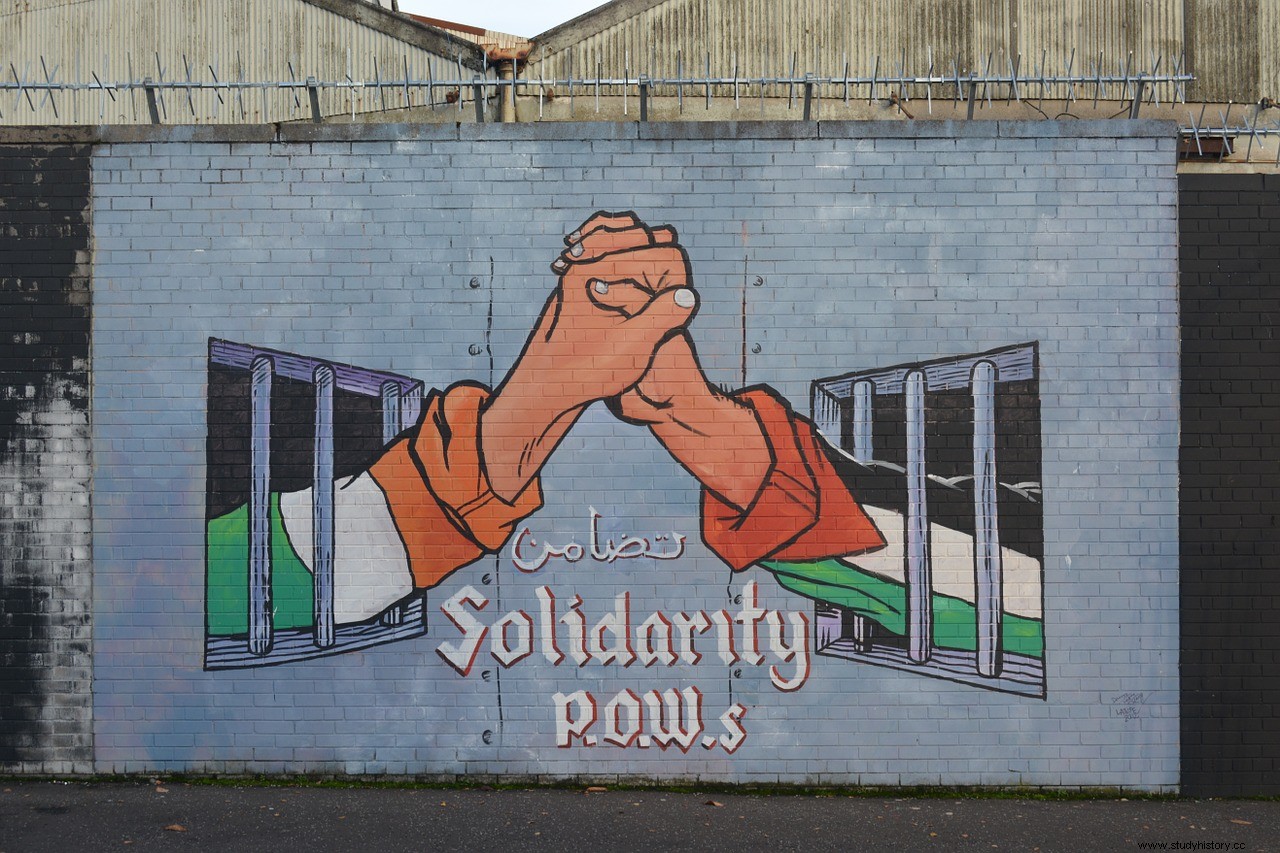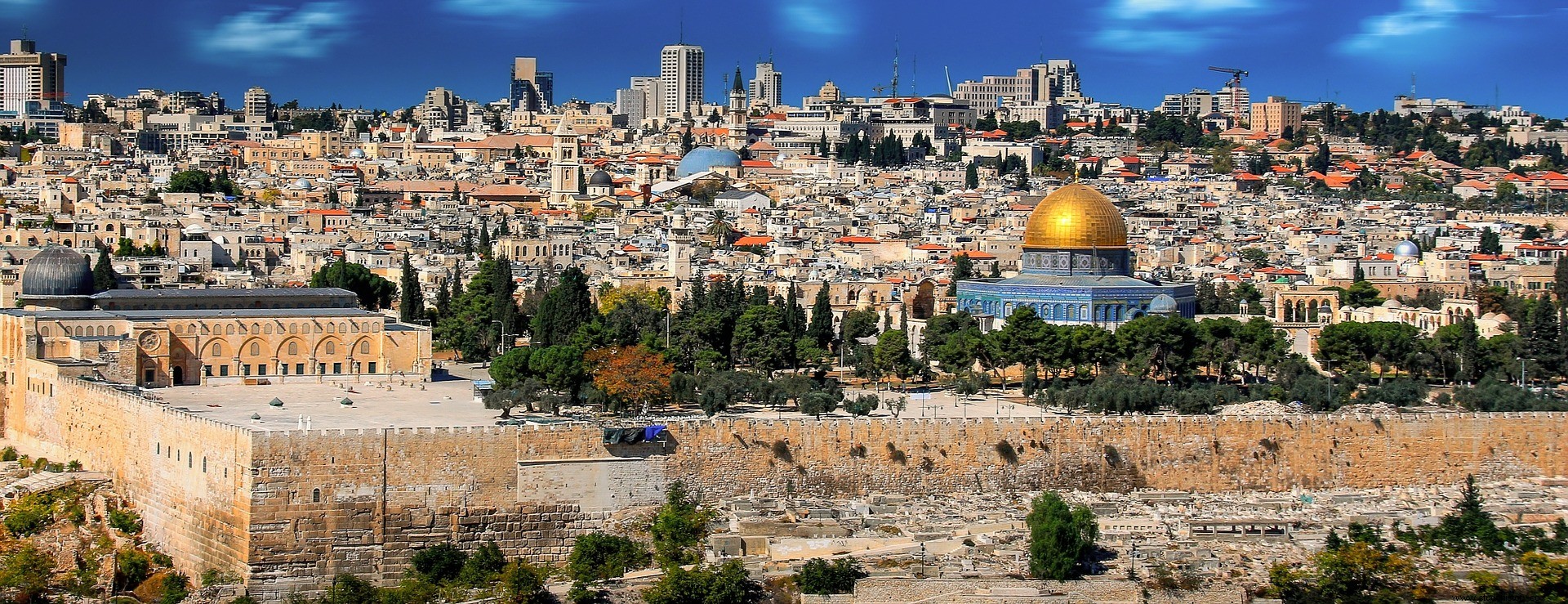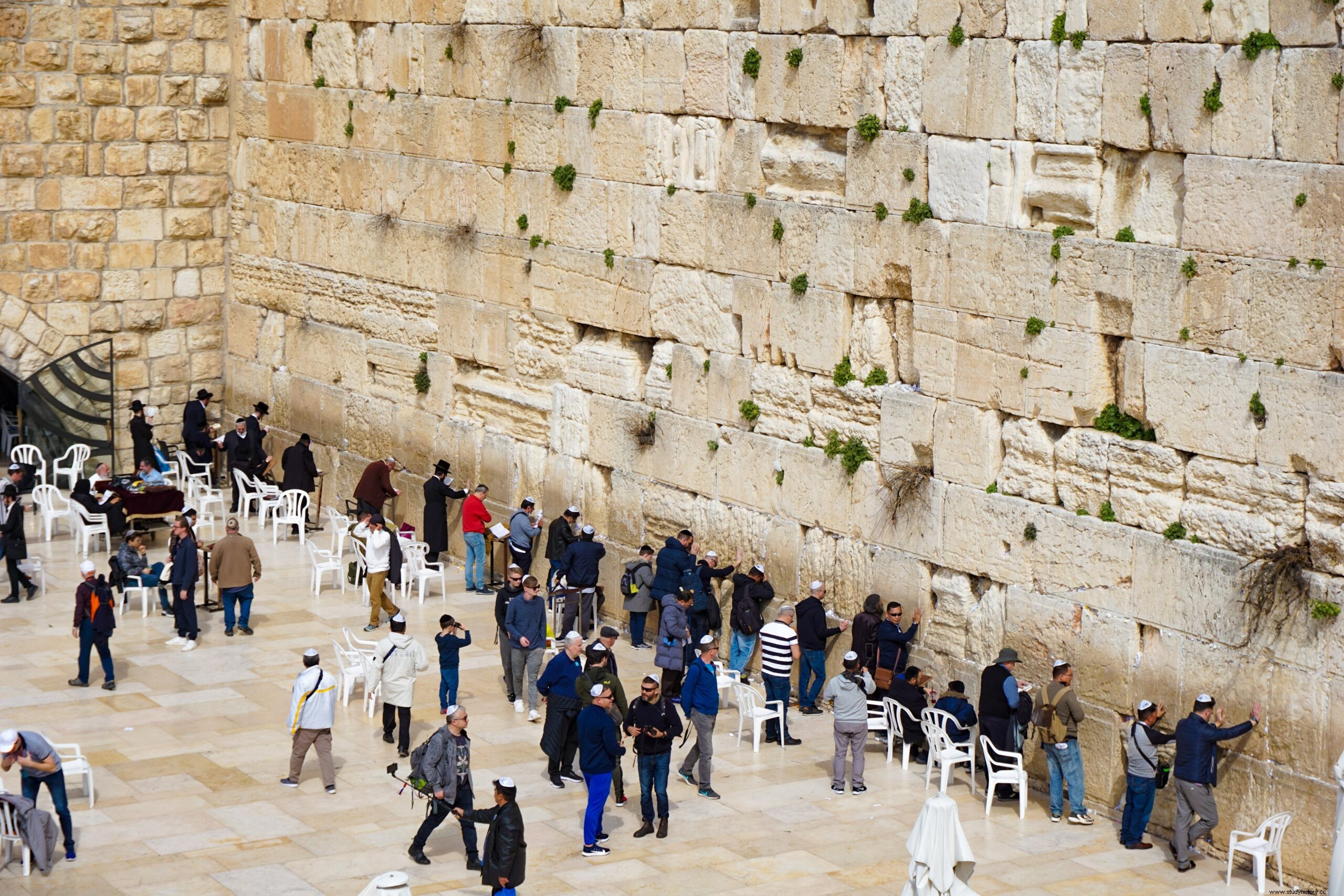It has been destroyed, besieged, captured, attacked, deleted from the world map even! But it rose back from the bottom every time. One of the oldest cities in the world, I think the gods themselves went down in solidarity to protect this holy city of Jerusalem, which hosts the Holy Trinity of the largest monotheistic world religions - Judaism, Islam and Christianity. The capital of the Jewish nation of Israel, the Palestinian Authority has also claimed a similar claim over it as the capital of the future sovereign Palestinian state.
The holy city of Jerusalem has long been an object of reverence and conflict and has played a central role in the spiritual and emotional perspective of the three major monotheistic religions. For Jews all over the world, it is the focus on ancient longings, a living proof of ancient greatness and independence and a center of national renaissance; for Christians it is the scene of Jesus' pain and victory; for Muslims, it is the destination of the Prophet Muhammad's mysterious night journey and the site of one of Islam's most sacred shrines.
Jerusalem has been located on urban bedrock between the Mediterranean and the Dead Sea, and has been an urban center for about 5,000 years. To the north and west it narrows to the Jezreel Valley and the Galilee ridges, while to the south lies the Judean Desert. The city is surrounded by three steep gorges (to the east, south and west). On the other side of the eastern gorge, across the Kidron Valley, lies the Mount of Olives. Today, Jerusalem consists of the modern, western part, built after the institution of the State of Israel in 1948 CE, and the medieval part, known as the Old City, which is surrounded by walls and gates built during Suleiman I's reign. (1494-1566 AD) when the province was part of the Ottoman Empire. The Old Town is divided into four quarters:The Jewish Quarter; the Christian quarter; the Muslim Quarter; and the Armenian Quarter.
Israel - Palestine Conflict

Palestinians, the Arab population coming from the land now controlled by Israel, refer to the territory as Palestine, and want to establish a state with that name on all or parts of the same country. The Israeli-Palestinian conflict is over who gets which country and how it is controlled. Although both Jews and Arabs claim rights over the land dating back thousands of years, the current conflict will find its origins in 20 th Century. Jews fleeing persecution in Europe wanted to establish a national homeland in what was then an area of Arab and Muslim majorities in the Ottoman and later British empires. The Arabs resisted and rightly regarded the country as theirs. A UN resolution process clearly failed, Israel and the surrounding Arab nations fought several wars over the territory, eight of them recognized by the state of Israel. They are:
- 1948 Arab-Israeli War (1947 - 1949) - Israel v / s Egypt, Iraq, Syria, Transjordan, Syria, Lebanon, Saudi Arabia, Yemen.
- Sinai War (1956) - Israel, Great Britain, France v / s Egypt
- Six Day War (1967) - Israel v / s Egypt, Syria, Jordan, Iraq
- Attrition War (1967–1970) - Israel v / s Egypt, Soviet Union, PLO, Jordan
- Yom Kippur Wars (1973) - Israel vs. Egypt, Iraq, Syria, Jordan, Algeria, Morocco, Saudi Arabia, Cuba, North Korea
- First Lebanon War (1982-1985)
- Security Zone Campaign (1985-2000)
- Second Lebanon War (2006)
- Operation Protective Edge (2014)
Today's lines largely reflect the outcome of two of these wars, one waged in 1948 and another in 1967. The Six Day War fought in 1967 between Israel and the Arab states of Egypt, Syria and Jordan played a crucial role in determine the current position of Jerusalem as it left Israel in control of the West Bank and Gaza Strip, two territories inhabited by large Palestinian populations. As of today, the West Bank is nominally controlled by the Palestinian Authority and is under Israeli occupation. This comes in the form of Israeli troops, who enforce Israeli security restrictions on Palestinian movement and activity, and Israeli "settlers", Jews who are building ever-growing communities in the West Bank that effectively deny the land to the Palestinians. Gaza is controlled by Hamas, an Islamist fundamentalist party, and is under Israeli blockade, but not occupied by troops.
Jerusalem:What and how?

What :Jerusalem is a city that stretches across the border between Israel and the West Bank. It is home to some of the holiest sites in both Judaism and Islam, and therefore both Israel and Palestine will make it their capital. How to divide the city fairly is still one of the fundamental problems that divide Israelis and Palestinians. Israel calls Jerusalem its undivided capital today, but until recently no country has recognized it as such. UN Security Council Resolution 478 condemned Israel's decision to annex East Jerusalem as a violation of international law and called for a compromise solution. However, at 6 th In December 2017, under Trump's leadership, the United States officially recognized Jerusalem as the capital of Israel and moved the embassy from Tel Aviv to Jerusalem. Subsequently, several other countries such as Guatemala, Honduras, Nauru, Kosovo, Malawi and Serbia recognized Jerusalem as the capital of Israel. Other Islamic nations such as Iran, Oman, Pakistan and Venezuela have recognized united Jerusalem as the Palestinian capital. Some countries such as Australia, Argentina and Russia have taken a halfway step in contributing to the peace process between Israel and Palestine and have recognized West Jerusalem as the capital of Israel and East Jerusalem as the Palestinian capital.
How: From 1517 until the First World War, Jerusalem was part of the Ottoman Empire. Since the 1860s, the Jews have formed the largest religious group in the city, and since around 1887, with the beginning of the expansion outside the old city walls, the Jews have been in the majority. Historically, the Vatican has had a special interest in protecting Christian churches and holy sites in the region, and traded specifically with the agency in Italy and France as Catholic states to advance this goal. In the 19th century, European powers competed for influence in the city, usually under the pretext of extending protection over Christian churches and holy sites. Most of these European countries, especially France, entered into capitulation agreements with the Ottoman Empire and also established consulates in Jerusalem. In 1847 the first Latin patriarch of Jerusalem since the crusades were created. In 1917, after World War I, Britain conquered Jerusalem. In 1922, the mandate for Jerusalem was also granted to Great Britain as part of the League of Nations mandate. From 1922 to 1948, the total population of the city increased from 52,000 to 165,000 to 1947 1947, which made up two-thirds of the Jews and one-third of the Arabs, and with this growing population, the conflict between the three communities — Jews, Christians, and Arab Muslims — increased. resulted in recurring conflicts. Following the expiry of the British mandate for Palestine in XNUMX, Britain referred the conflict to the UN for peaceful resolution. The UN Partition Plan of XNUMX recommended the establishment of a special international regime in the city of Jerusalem, and constituted it as a corpus separatum under the auspices of the United Nations. The international regime (which also included the city of Bethlehem) was to remain in force for a period of ten years, after which a referendum was to be held in which the inhabitants were to decide the city's future regime. However, this plan was not implemented when the war broke out in 1948, while the British withdrew from Palestine and Israel declared its independence. For the first 20 years of Israel's existence, Jerusalem was divided. Israel controlled parts of Jerusalem and the suburbs within the red dotted line on this map, while Jordan controlled everything outside it (blue dotted lines separate Jerusalem from the suburbs). Jordan controlled the Temple Mount, a hill in the brown spot on the map. The ground hosts west ~ TRUNC , a retaining wall to an ancient Jewish temple and one of the holiest sites of Judaism, and two of Islam's most important landmarks, the al-Aqsa Mosque and the Clipping Dome . Israeli Jews were not allowed to pray in the area while Jordan controlled it. During the 1967 war, Israel took control of East Jerusalem
This war demanded a high price from the people who were expelled from their homeland. The Jewish inhabitants of East Jerusalem were expelled by the Jordanian Arab Legion. Jordan allowed Arab Palestinian refugees from the war to settle in the deserted Jewish quarter, known as Harat al-Sharaf . After 1948, since the old fortified city was entirely east of the ceasefire line, Jordan was able to take control of all the holy sites there. While Muslim shrines were maintained and renovated, contrary to the terms of the ceasefire agreement, Jews were denied access to Jewish shrines, many of which were destroyed or desecrated. Several restrictions were also placed on Christians in the region who barely had access to their religious sites.
Ethnicity, people and culture

Culture :Jerusalem is the political, religious, historical and cultural center of Israel, with the Israel Museum as the main cultural attraction. In addition to its large collection of Western and Israeli paintings, the museum has an extensive archaeological collection in the Middle East, several important Dead Sea Scrolls and other relics, a remarkable collection of Jewish ritual art, ethnological exhibitions in the Middle East, a sculpture garden and a youth wing. The Rockefeller Archaeological Museum (1938), located in East Jerusalem, concentrates on the archeology of the Holy Land. There is an Islamic museum on Temple Mount (the area is known in Islam as Al-amaram al-Sharīf), where the Al-Aqṣā Mosque and the Dome of the Rock are located. Museum on the Seam (1983), located in the former no-man's-land that divided Jewish West Jerusalem and Arab East Jerusalem, is a contemporary art museum that often deals with controversial social and political themes.
servings :The people here are mainly classified according to their religious affiliation. A majority of the city's residents are either secular or traditional Jews. Muslims are the most homogeneous of societies, and Christians - represented by many sects and churches - are the most diversified. Housing segregation is the norm, and Jews and Arabs live almost exclusively in certain districts.
- Jews :Jews are mainly categorized as Ashkenazim (mostly Jews of Central and Eastern European origin), Sephardim (Jews of Spanish and Portuguese origin) and Mizrahim (North African or Oriental Jews). Religious controversy plays a major role in local politics, and disputes often arise over issues such as Sabbath observance or kashruth. The holiest site is Temple Mount , which many orthodox Jews refrain from setting foot in for fear of desecrating the sanctuary in the place where it once stood. In addition to the Western Wall - the most important center for prayer and pilgrimage - other sacred sites include the famous tomb of King David on Mount Zion the Olivenberg with its ancient Jewish cemetery, and the graves of priestly families in the Kidron Valley . Old synagogues and study houses in the old town have been refurbished; especially worth mentioning is the interconnected group of four synagogues that began in the 16th century of Jews exiled from Spain . Jerusalem is one of the world's foremost centers for rabbinic learning and contains many yeshivas. Notable modern religious structures include the Great Synagogue of Jerusalem and the synagogue and associated institutions of the followers of the Belz Rebbe, a Hasidic rabbi whose court is in Jerusalem.
- Muslims :Although there is a minority of 20 th C, they were more than the Christians with 21 st C. Almost all are Sunni Muslims. Jerusalem is revered by Muslims as the third holiest site on earth, and the pilgrimage to Jerusalem ( taqdīs ) is seen as an optional supplement to the pilgrimage to Mecca, hajj. For Muslims, the Temple Mount site is known as Haram al-Sharif , or Noble Sanctuary, and is considered the third holiest site in Islam, after Mecca and Medina in Saudi Arabia. This is where Muslims believe that the Prophet Muhammad ascended to heaven and houses the Dome of the Rock and the Al-Aqsa Mosque. According to David Brog, CEO of Christians United For Israel, “When the Muslims conquered Jerusalem in the seventh century, they built a mosque (as is their custom) right on the site they had conquered. This is why the plateau where the first and second temples once stood — the holiest site in Judaism — is now the very site of the Al-Aqsa Mosque and the Dome of the Rock today. Other religious sites of interest to Muslims are Dome of the Rock, Well of Souls or The Most Holy , Chain Dome, Al-Khanqah al-Salahiyya Mosque, Al-Yaqubi Mosque - The Crusader Church of St. James Intercisus, transformed after 1187 into a mosque and Mosque of Omar .
Who controls Temple Mount / Al Aqsa now? During the Six Day War in 1967, Israel conquered the Old City and along with it the Temple Mount. However, Israeli leaders decided to let the Islamic Waqf trust continue to operate the site, with its house of Islamic structures, including the Al-Aqsa Mosque. Today, while Waqf controls the Temple Mount itself, Israel controls the site's entrances and may - in times of increased tension - decide to restrict visitors.
- Christian :Christians make up the smallest but most religiously diverse part of the population. The main groups are Eastern Orthodox, Oriental Orthodox, Roman Catholic and Protestant. Important religious sites for Christians in Jerusalem are the Ascension Dome (Rebuilt by the Crusaders in the 12th century), Via Dolorosa (9 of the 14 Cross Stations), The Holy Church Grave (Placement of Christ's crucifixion in a tug of war between Christian sects), Tomb of the Virgin Mary (A mix of Greek, Armenian, Syrian, Coptic and Ethiopian Orthodox churches fighting for rights).
Language :The main languages spoken in Jerusalem are Hebrew in West Jerusalem and Arabic in East Jerusalem. Most people in the city speak sufficient English for communication. English in particular is widely spoken in areas most visited by tourists, especially the old town.
Ended? Nowhere near !!
A surreal and vibrant city, Jerusalem is truly special. Beyond its religious and historical significance, Jerusalem is a modern and advanced city. There are religious undertones that definitely do not remove her from her metropolitan charm that you have to experience to believe. Be it the kitchen or the culture, she is certainly remarkable. For all of you who are interested in knowing a place to experience it at its best, I have given you a glimpse of the extraordinary past of one of the oldest cities in this world. But there is so much more to it. And I'm not done yet. This overdose of facts was just to begin with. My next blogs about Jerusalem will cover other interesting aspects about her beauty and charm. So stay tuned!
